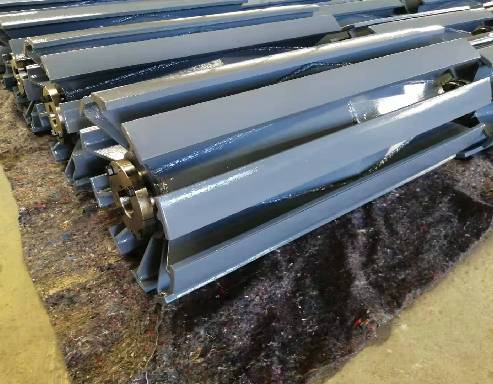 Afrikaans
Afrikaans  Albanian
Albanian  Amharic
Amharic  Arabic
Arabic  Armenian
Armenian  Azerbaijani
Azerbaijani  Basque
Basque  Belarusian
Belarusian  Bengali
Bengali  Bosnian
Bosnian  Bulgarian
Bulgarian  Catalan
Catalan  Cebuano
Cebuano  Corsican
Corsican  Croatian
Croatian  Czech
Czech  Danish
Danish  Dutch
Dutch  English
English  Esperanto
Esperanto  Estonian
Estonian  Finnish
Finnish  French
French  Frisian
Frisian  Galician
Galician  Georgian
Georgian  German
German  Greek
Greek  Gujarati
Gujarati  Haitian Creole
Haitian Creole  hausa
hausa  hawaiian
hawaiian  Hebrew
Hebrew  Hindi
Hindi  Miao
Miao  Hungarian
Hungarian  Icelandic
Icelandic  igbo
igbo  Indonesian
Indonesian  irish
irish  Italian
Italian  Japanese
Japanese  Javanese
Javanese  Kannada
Kannada  kazakh
kazakh  Khmer
Khmer  Rwandese
Rwandese  Korean
Korean  Kurdish
Kurdish  Kyrgyz
Kyrgyz  Lao
Lao  Latin
Latin  Latvian
Latvian  Lithuanian
Lithuanian  Luxembourgish
Luxembourgish  Macedonian
Macedonian  Malgashi
Malgashi  Malay
Malay  Malayalam
Malayalam  Maltese
Maltese  Maori
Maori  Marathi
Marathi  Mongolian
Mongolian  Myanmar
Myanmar  Nepali
Nepali  Norwegian
Norwegian  Norwegian
Norwegian  Occitan
Occitan  Pashto
Pashto  Persian
Persian  Polish
Polish  Portuguese
Portuguese  Punjabi
Punjabi  Romanian
Romanian  Russian
Russian  Samoan
Samoan  Scottish Gaelic
Scottish Gaelic  Serbian
Serbian  Sesotho
Sesotho  Shona
Shona  Sindhi
Sindhi  Sinhala
Sinhala  Slovak
Slovak  Slovenian
Slovenian  Somali
Somali  Spanish
Spanish  Sundanese
Sundanese  Swahili
Swahili  Swedish
Swedish  Tagalog
Tagalog  Tajik
Tajik  Tamil
Tamil  Tatar
Tatar  Telugu
Telugu  Thai
Thai  Turkish
Turkish  Turkmen
Turkmen  Ukrainian
Ukrainian  Urdu
Urdu  Uighur
Uighur  Uzbek
Uzbek  Vietnamese
Vietnamese  Welsh
Welsh  Bantu
Bantu  Yiddish
Yiddish  Yoruba
Yoruba  Zulu
Zulu Return Rollers for Conveyors - Enhance Your Conveyor System Efficiency
Understanding Return Rollers for Conveyors
Return rollers are a fundamental component of conveyor systems, playing a crucial role in ensuring the efficient movement of materials. These rollers are primarily positioned on the return side of the conveyor belt, facilitating the safe and smooth return of the belt to its starting point after materials have been transported. In this article, we will explore the significance, types, and maintenance of return rollers in conveyor systems.
Significance of Return Rollers
The primary purpose of return rollers is to support the return run of the conveyor belt, which ensures that the belt remains properly aligned and tensioned. This alignment is crucial, as a misaligned belt can lead to increased wear on both the belt and the rollers, resulting in costly downtime and repairs. Additionally, return rollers help in maintaining the proper, consistent shape of the belt, which is essential for optimal performance. They also aid in minimizing belt sagging, reducing the risk of damage to the belt and the materials being transported.
Moreover, return rollers contribute to the overall efficiency of the conveyor system. By facilitating a smooth return, they help maintain the speed of the conveyor, ensuring that materials are moved quickly and efficiently from one point to another. This efficiency is vital in industries such as mining, manufacturing, and logistics, where timely material handling is crucial for productivity.
Types of Return Rollers
Return rollers come in various designs, suited for different applications
. The most common types include1. Flat Return Rollers These are the standard return rollers used in many conveyor systems. They have a simple cylindrical design and are primarily used in applications where the belt needs basic support during its return journey.
return rollers for conveyors

2. Rubber Coated Rollers These rollers are covered with a layer of rubber, providing additional grip and reducing noise. They are particularly useful in applications where the materials being transported are prone to slipping or where noise reduction is a priority.
3. Self-Cleaning Rollers These rollers feature a design that helps prevent the accumulation of debris and materials on the roller surface. This feature is particularly beneficial in environments where dust, dirt, or other particles are prevalent, as it helps maintain optimal performance and extends the life of the rollers.
4. Idler Rollers These rollers are used in specific configurations to support the return side of the conveyor belt while allowing for controlled movement of the belt. Idler rollers are essential in maintaining the desired tension and alignment of the belt.
Maintenance of Return Rollers
Proper maintenance of return rollers is essential for ensuring longevity and optimal performance. Regular inspection of the rollers for wear and tear can help identify potential issues before they escalate into more significant problems. This inspection should include checking for signs of corrosion, misalignment, and any debris accumulation.
Lubrication is another critical aspect of maintenance. Keeping the bearings of the rollers well-lubricated reduces friction, helping to improve efficiency and decrease the likelihood of breakdowns. Operators should adhere to the manufacturer’s guidelines regarding lubrication intervals and types of lubricants to use.
In conclusion, return rollers are vital components of conveyor systems, ensuring the smooth operation and longevity of the belt. Understanding their significance, the various types available, and the importance of regular maintenance can help industries optimize their material handling processes, ultimately leading to increased efficiency and productivity. By investing in quality return rollers and ensuring proper upkeep, businesses can enhance their operational effectiveness and reduce unnecessary downtime.
-
Revolutionizing Conveyor Reliability with Advanced Rubber Lagging PulleysNewsJul.22,2025
-
Powering Precision and Durability with Expert Manufacturers of Conveyor ComponentsNewsJul.22,2025
-
Optimizing Conveyor Systems with Advanced Conveyor AccessoriesNewsJul.22,2025
-
Maximize Conveyor Efficiency with Quality Conveyor Idler PulleysNewsJul.22,2025
-
Future-Proof Your Conveyor System with High-Performance Polyurethane RollerNewsJul.22,2025
-
Driving Efficiency Forward with Quality Idlers and RollersNewsJul.22,2025





























